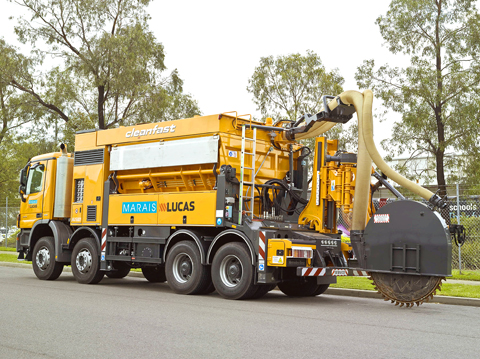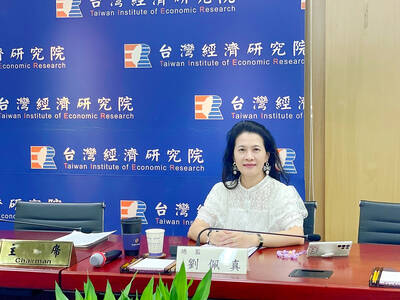From snowy mountains and sun-baked deserts to the steamy tropical north, Australia has begun wiring its vast expanse with a high-tech broadband network in a giant project being closely followed abroad.
Workmen are already digging trenches in Tasmania, the first step in a US$37 billion scheme that Australian Prime Minister Kevin Rudd calls the country’s biggest ever infrastructure venture.
The ambitious plan aims to connect 90 percent of homes, including remote Outback settlements and sprawling coastal cities, with fiber-optic cable by 2017, accelerating lagging network speeds and boosting the economy.

PHOTO: AFP
The sheer scale of the project has drawn interest from foreign governments including the US, where President Barack Obama has outlined similar plans.
Engineers will lay cable across 7.7 million square kilometers of often challenging terrain that covers an area twice the size of the EU.
“There’s no kidding about it, it’s a massive job,” telecommunications analyst Paul Budde said. “You have to physically go to 10 million premises and bring a cable there, either [by] digging it or via [power] poles and then obviously it’s not just having the cable, you have to have the installation in the house.”
Specialized French digging machines have been shipped to Tasmania to lay the first of millions of kilometers of fiber-optic cable. By next June, three pilot towns are expected to be enjoying connection speeds of 100 megabits per second.
Just 0.1 percent of Australians are linked to fiber-optic cable, with most accessing the Internet over the 100-year-old copper telephone network, prompting Rudd to call the country a “broadband backwater.”
Rudd, announcing the project in April, said Australia had some of the developed world’s slowest Internet speeds and lowest access rates.
Some Outback communities rely on dial-up connections and others have no Internet at all.
Industry expert Reg Coutts, who advised the government on the network, said the venture had attracted top-level attention in the US and other countries.
“There’s really an absolute interest, particularly in America, but also in Europe,” he said.
“People are asking: ‘What the hell are you doing and how are you doing it?’ People of course are skeptical,” he said.
Laying the network was only the first step, he said, with the real challenge transitioning 10 million customers from old TV, telephone and Internet networks.
“That alone, we have never seen on that magnitude anywhere in the world,” Budde said.
Once laid, there was “really no limit” to what the fiber network could do, said Ravi Bhatia, CEO of Primus Telecom and spokesman for industry consortium Terria.
He said technological advances in areas such as satellite mapping would make the roll-out easier than it would have been even three years ago, allowing for “smart” deployment of resources and machines to dig and pull cable.
“By using the latest technology building this network we create another set of skills which we can then export to other countries and build their networks,” Bhatia said.
Coutts said there was “a lot of infrastructure that could potentially be utilized in the NBN [National Broadband Network],” but estimated that it was only about 10 percent of what was needed.
“Most of what’s going to go on is purely civil works, actually pulling in and splicing optical fiber to replace the copper,” he said.

A proposed 100 percent tariff on chip imports announced by US President Donald Trump could shift more of Taiwan’s semiconductor production overseas, a Taiwan Institute of Economic Research (TIER) researcher said yesterday. Trump’s tariff policy will accelerate the global semiconductor industry’s pace to establish roots in the US, leading to higher supply chain costs and ultimately raising prices of consumer electronics and creating uncertainty for future market demand, Arisa Liu (劉佩真) at the institute’s Taiwan Industry Economics Database said in a telephone interview. Trump’s move signals his intention to "restore the glory of the US semiconductor industry," Liu noted, saying that

On Ireland’s blustery western seaboard, researchers are gleefully flying giant kites — not for fun, but in the hope of generating renewable electricity and sparking a “revolution” in wind energy. “We use a kite to capture the wind and a generator at the bottom of it that captures the power,” said Padraic Doherty of Kitepower, the Dutch firm behind the venture. At its test site in operation since September 2023 near the small town of Bangor Erris, the team transports the vast 60-square-meter kite from a hangar across the lunar-like bogland to a generator. The kite is then attached by a

Foxconn Technology Co (鴻準精密), a metal casing supplier owned by Hon Hai Precision Industry Co (鴻海精密), yesterday announced plans to invest US$1 billion in the US over the next decade as part of its business transformation strategy. The Apple Inc supplier said in a statement that its board approved the investment on Thursday, as part of a transformation strategy focused on precision mold development, smart manufacturing, robotics and advanced automation. The strategy would have a strong emphasis on artificial intelligence (AI), the company added. The company said it aims to build a flexible, intelligent production ecosystem to boost competitiveness and sustainability. Foxconn

STILL UNCLEAR: Several aspects of the policy still need to be clarified, such as whether the exemptions would expand to related products, PwC Taiwan warned The TAIEX surged yesterday, led by gains in Taiwan Semiconductor Manufacturing Co (TSMC, 台積電), after US President Donald Trump announced a sweeping 100 percent tariff on imported semiconductors — while exempting companies operating or building plants in the US, which includes TSMC. The benchmark index jumped 556.41 points, or 2.37 percent, to close at 24,003.77, breaching the 24,000-point level and hitting its highest close this year, Taiwan Stock Exchange (TWSE) data showed. TSMC rose NT$55, or 4.89 percent, to close at a record NT$1,180, as the company is already investing heavily in a multibillion-dollar plant in Arizona that led investors to assume